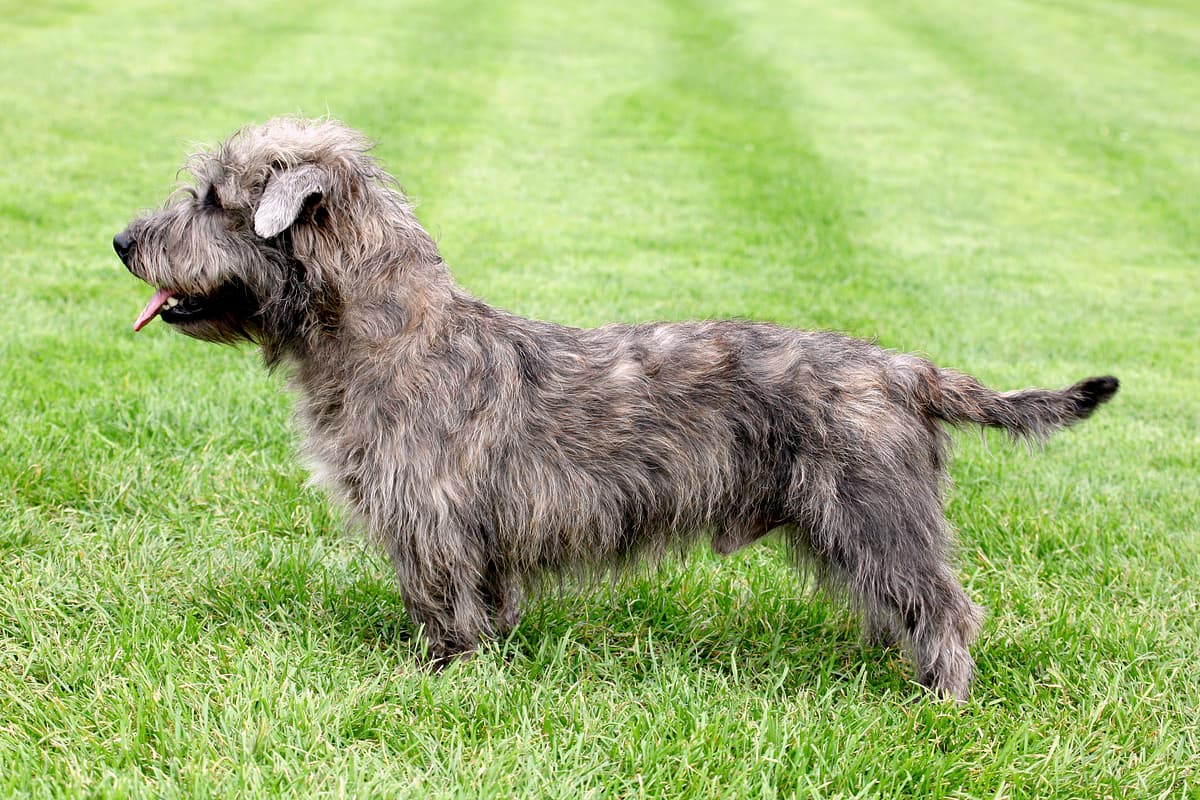Glen of Imaal Terrier vs English Bulldog
Discover the differences between Glen of Imaal Terrier and English Bulldog to make the best choice for your situation.
Try different breeds

Glen of Imaal Terrier
Sturdy, spirited, and affectionate, this breed thrives as a loyal companion and playful family member. Renowned for their strong work ethic and adaptable nature.

English Bulldog
Stocky, courageous, and affectionate, this breed charms with its wrinkled face and calm nature. Loyal and gentle, it thrives as a loving family companion.
Quick comparison
Medium
15–16 kg
Harsh coat, medium length
10–14 years
13–15 kg
Moderately active
Medium
23–25 kg
Short, smooth
8–10 years
18–23 kg
Low activity needs
Personality & behavior
Compare the personality traits and behavioral characteristics of both breeds.
Glen of Imaal Terrier
Affectionate with family, reserved with strangers
Quick learner, responds well to training
Moderate energy, enjoys regular daily walks
Enjoys games and interactive playtime
Adjusts well to various home environments
English Bulldog
Affectionate and gentle with family and children
Learns basic commands with some patience
Prefers lounging over vigorous physical activity
Enjoys play but tires fairly quickly
Adjusts well to most living environments
Care needs
Exercise, grooming, and daily care requirements
Glen of Imaal Terrier
Hip dysplasia, progressive retinal atrophy
English Bulldog
Brachycephalic syndrome, skin fold infections
Suitability
How well each breed fits different living situations and families
Glen of Imaal Terrier
Good option
Generally manageable with patient, consistent training and early socialization
Suitable choice
Moderate size and calm demeanor fit well in apartments with daily walks
Moderately suitable
Enjoys activity but doesn't require excessive exercise to stay content
Family friendly
Playful and sturdy, often gentle with young children when supervised
Needs caution
May show dominance toward other dogs without careful introductions
Not ideal
Dislikes being left alone for long periods and may develop behavioral problems
English Bulldog
Good option
Easygoing, low-maintenance nature suits owners with limited dog experience
Excellent fit
Moderate exercise needs and calm demeanor work well in small living spaces
Not ideal
Low stamina and breathing issues make them unsuited for high-activity lifestyles
Very suitable
Gentle, patient, and tolerant with young children when properly socialized
Usually compatible
Generally sociable but may need guidance with other pets, especially dogs
Not recommended
They struggle with long periods alone and are prone to separation anxiety
Breed strengths
What each breed excels at and their best qualities
Glen of Imaal Terrier
- Loyal to family members
- Good with respectful children
- Moderate exercise needs
- Low-shedding, easy-care coat
- Strong problem-solving ability
English Bulldog
- Affectionate with family members
- Generally good with children
- Low exercise requirements
- Minimal grooming needs
- Adaptable to apartment living
Challenges & considerations
Potential challenges and considerations for each breed
Glen of Imaal Terrier
- Prone to stubbornness during training
- Can be dog-aggressive if unsocialized
- Needs firm, consistent leadership
- Strong prey drive toward small animals
- Can be vocal when alerting
English Bulldog
- Prone to respiratory problems
- High risk of overheating
- Susceptible to skin infections
- Can be stubborn during training
- Tends to drool frequently
Ready to choose your perfect breed?
Learn more about each breed or compare other breeds to find the perfect match for your lifestyle.
Discover more helpful tools
Make use of our other free tools to get the most out of your pet experience
